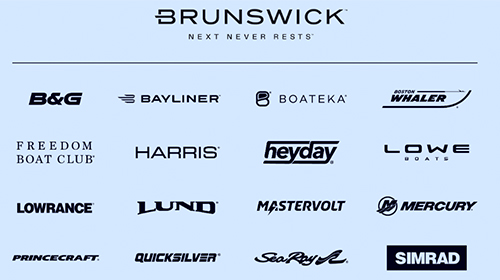
Blockbuster, Kodak, Kmart, Firestone, RCA, Sears, Borders, RadioShack, Polaroid, Sports Authority, Nokia, Toys “R” Us, GM, Chrysler and many others were at one time financially strong companies with smart leadership. However, they all either went out of business, filed for bankruptcy or became a shell of what they once were.
If it can happen to these businesses, then any leader reading this can fail spectacularly, no matter how strong or intelligent he or she is. Since none of us wants that ending for ourselves or our companies, how can we avoid it?
History teaches us two ways we can inoculate ourselves from failure.

Humility
Humility is perhaps the most critical mindset for a leader. Humility can be hard to embrace because leaders enjoy it when people laugh at their jokes and act happy when they walk into a room. People generally want to please a company’s leader. It is easy for leaders to become prideful, but pride has repeatedly been the root of leadership destruction.
Tim Irwin explains this well in his book Derailed. Irwin looks at the careers of several rock-star CEOs whose careers got off track. In each case, they seemed to have the proverbial golden touch, but it all came crashing down. Irwin identifies multiple reasons for the downfalls, but the common root cause was pride.
Watch out when leaders believe they’re intelligent, special or don’t need outside input; those are early warning signs of a pride problem. These signs are indications that you are likely wrong and that there is probably a derailment on the way.
To avoid a pride-related derailment, we must first understand and acknowledge the power of pride to derail us. Second, we must consciously decide not to let pride become a problem. Third, we must be self-aware enough to know when we are being prideful. Fourth, we need to have people around us who will call it out when they see us acting with pride or hubris. And finally, we must be willing to be humble when we recognize pride in ourselves or someone points it out.
In other words, we must be intentional about not letting pride derail us. Pride feels good, but we must be smart enough to see beyond it.
Adaptability
A well-known naturalist once said it is not the strong or the smart who survive. It’s the adaptable. Most leaders say they don’t mind change. What they really mean is they don’t mind change that they initiate. However, being willing to initiate change does not make a leader adaptable. Adaptability is determined by how leaders react to change, either occurring or coming.
Each company that I mentioned at the beginning of this column had the talent and resources to embrace and monetize the changes that eventually put it out of business. The companies failed because their leaders could not adapt.
The reason most leaders cannot adapt to change is that they are trapped by their own thinking. Because of this, almost all significant change comes from the periphery, often from those with no previous experience in the industry they are disrupting. Those ensconced in their businesses cannot see beyond what they do and are usually unwilling to acknowledge an incoming tide of change until it is too late. This is the driving principle of Clayton Christensen’s The Innovator’s Dilemma.
Technological change is one area that will affect every industry. Increased computational power is driving technologies at a breakneck pace. These technologies are converging to create new products and business models that we cannot imagine today. These new products and business models will likely put many organizations out of business, but that doesn’t have to happen if we are intentionally adaptable.
Adaptability begins with leaders acknowledging the need to be adaptable. It may not come naturally. They must work at it. Second, adaptability requires leaders to keep scanning the periphery for potential threats or ideas, even those that seem outlandish. Third, leaders must be willing to invest in new ideas that lack a traditional return on investment, or at least be willing to collaborate on crazy ideas. Fourth, leaders must understand and accept that concepts on the periphery can be high-risk, high-potential-return investments. Leaders need to accept that most of the ideas may not pay off — and that the ones that do pay off could be disruptive game-changers that ensure they stay in business. Being adaptable is not just a best practice. It is a matter of survival.
Every leader wants to be successful, but those who embrace humility and adaptability significantly improve their odds of leading a healthy company for a long time.
Bill Yeargin is CEO of Correct Craft and has authored five books, including the best-seller Education of a CEO.
This article was originally published in the February 2023 issue.










